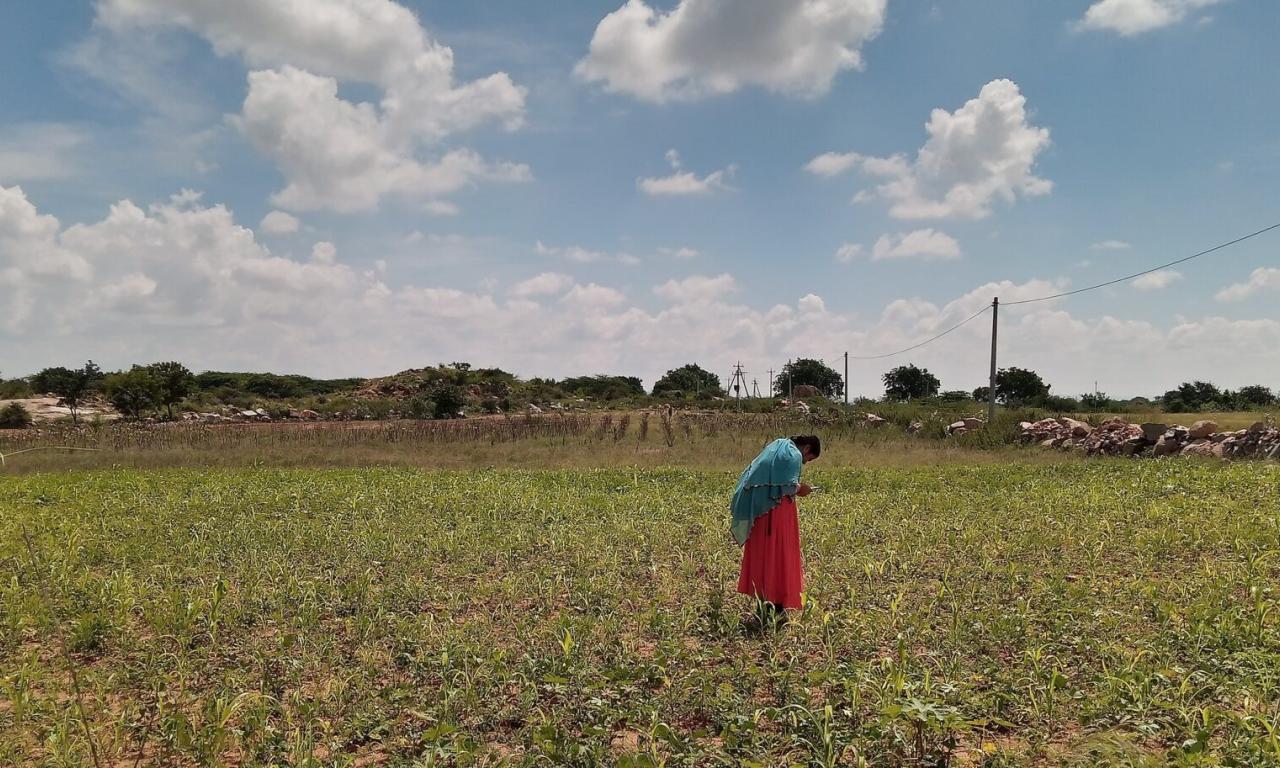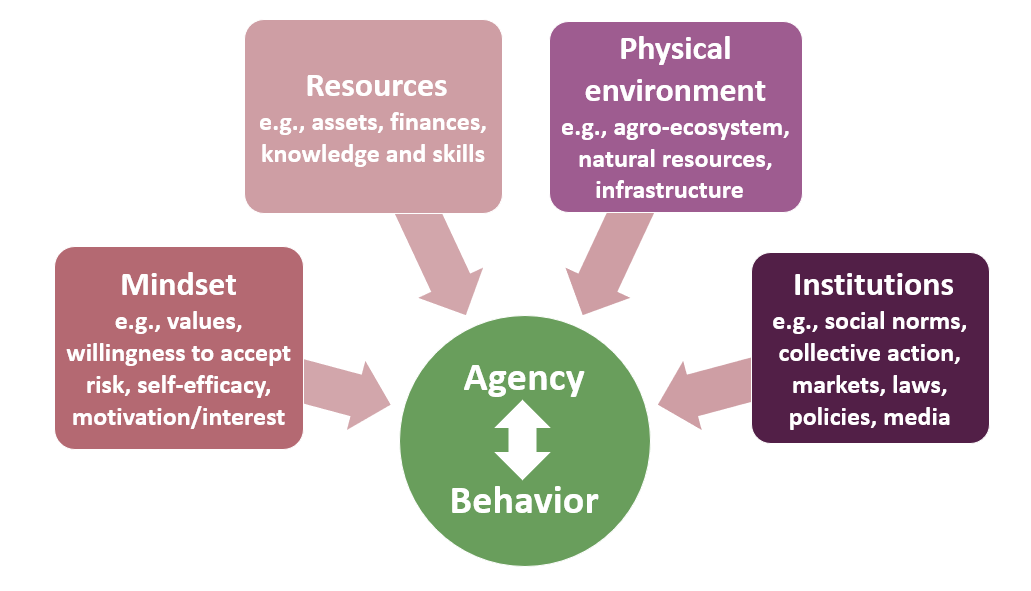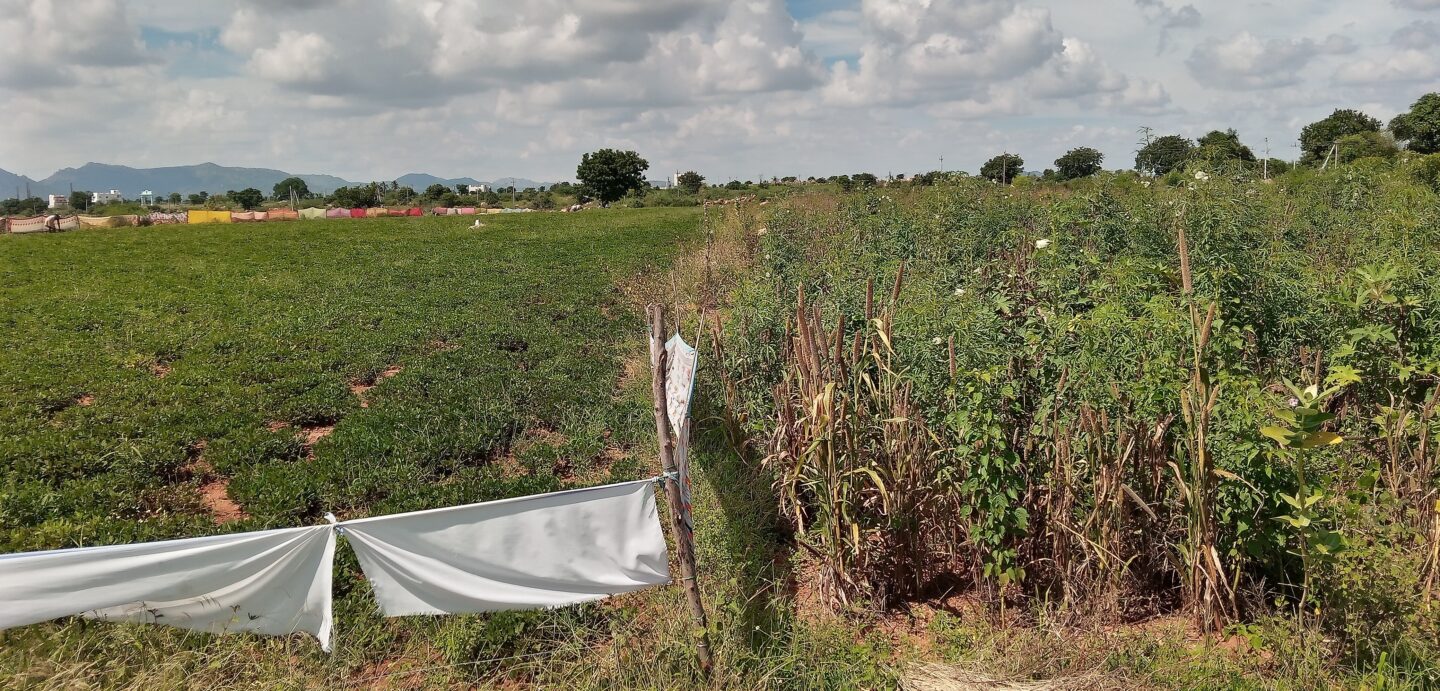
- CGIAR Agroecology Initiative is working towards food systems becoming more agroecological through changes across the food system, including food system actor behaviors in food, land, and water systems across the Global South.
- The initiative’s Work Package 5 supports behavior change research and engagements, from the basic notion that diverse behavioral changes are required to foster a transformation in the global network of Agroecological Living Landscapes.
- Outcomes in theories of change can always be associated with somebody’s behavioral change. Such a broader view needs to be adapted by scientists, donors, policymakers, business partners, and civil society.
Agroecology is about making the most of nature’s goods and services while maintaining ecosystem integrity and improving resource efficiency, strengthening resilience, and securing social equity and responsibility in our food systems. In the CGIAR Agroecology Initiative: Transforming Food, Land, and Water Systems Across the Global South, we are working towards food systems becoming more agroecological through changes across the food system, including food system actor behaviors.
The initiative’s Work Package 5 supports behavior change research and engagements in the global network of Agroecological Living Landscapes, working from the basic notion that diverse behavioral changes are required to foster an agroecological transformation. Behavior can refer to actions, interactions, and diverse practices. This means that diverse interacting actors may need to change how they are currently doing different things. Individual and collective behavioral change intensively interacts with individual and/or collective actors’ ability to make important decisions and to act upon them (their Agency). Attention to agency can illuminate influential behavioral drivers that may enable or impede behavior change. This directly leads to a critical challenge faced by many actors who try to trigger agroecological transformation: How can behavioral change and agency critical for agroecological transformation be supported?
Answering this question requires us to conceptualize the drivers of behavioral change and agency. Different drivers can act as barriers or enablers of change. Drawing from behavior change work in various fields, we group behavioral drivers relevant to agroecological transformation into four types (Figure 1). Some drivers, especially mindsets and resources, are more closely linked to specific actors. The physical environment and institutional framework can be understood as an opportunity space. Both the more actor specific and the opportunity space drivers affect different actors’ agency and behavior.
One important contribution of the Agroecology Initiative is to better understand who would need to do what differently to support an agroecological transition, what drives actors’ current behavior, and what can trigger desirable behavioral change. This understanding could help to develop more powerful Theories of Change of initiatives intending to support agroecological transformation.

As a first step, we conducted an inventory of current and past initiatives (including projects, programs, community based initiatives, social movements, and collective actions) in Zimbabwe, Peru, Kenya, Tunisia, and India that targeted at least some of the aforementioned dimensions of agroecology (resource efficiency, strengthening resilience, and securing social equity and responsibility). We screened project documents and other publicly available materials related to the initiatives to extract the assumptions underlying the Theories of Change and the successes and failures in bringing about agency and behavior change. Below we present the preliminary results of our assessment:
We observe that training and knowledge dissemination were often the main approaches to trigger behavior change in past initiatives. Some initiatives complemented knowledge and skill strengthening with addressing environmental and institutional drivers of behavior. Markets and institutions were common focal drivers in these latter initiatives. In Kenya, farm level activities related to improving the physical environment, in combination with capacity enhancement (resources) were the most common approaches undertaken to provoke change. In Tunisia, sensitization and capacity building approaches started to emerge after the mid-2000s, with a strong contribution from social movements and non-governmental organizations. In Zimbabwe and India, economic factors and a supportive market environment were key drivers and influenced the success of behavior change efforts within initiatives. Findings in these two countries also demonstrated the power of government support and incentive mechanisms to encourage agroecological behaviors, at least to reap the benefits offered for following promoted practices.

Another important finding emerging from the preliminary results is that some behavioral drivers are of particular importance for certain groups, underscoring the need to address gender, equity, and social inclusion in agroecological transitions. For instance, labor requirements were especially relevant for women farmers and other labor-constrained groups in Zimbabwe and affected the success of past initiatives’ approaches to behavior change as well as outcomes such as fairness and participation. In Peru, indigenous women’s participation in initiatives is a challenge due to their heavy production and care workloads and cultural norms such as needing approval from the husband to participate in other activities.
Our assessments support the call for a broader reflection on behavioral change, agency, and its drivers when developing strategies and action plans for agroecological transformation. The broader view can help to make transparent the key assumptions underlying the anticipated chain of results (actions -> outputs -> outcomes). It is important to acknowledge that eventually, outcomes in theories of change can always be associated with somebody’s behavioral change. Such a broader view needs to be adapted by scientists, donors, policy makers, business partners, and civil society.
Agriculture and development-related conceptualizations of behavior change :
-Bill & Melinda Gates Foundation – Empowerment Model: https://docs.gatesfoundation.org/Documents/BMGF_EmpowermentModel.pdf
-UNICEF – Behavioural Drivers Model: https://www.unicef.org/mena/media/5586/file/The_Behavioural_Drivers_Model_0.pdf%20.pdf
-CRS – Agricultural behavior change: https://www.crs.org/sites/default/files/tools-research/sbc_in_al_brief_intro_low_res.pdf
-Rare – Levers for behavior change: https://behavior.rare.org/behavioral-science-landing/
-Rare – Scaling behavior change: https://behavioralscientist.org/to-scale-behavior-change-target-early-adopters-then-leverage-social-proof-and-social-pressure/
This news article originally appeared on CGIAR and was authored by Véronique Alary, CIRAD/ICARDA, Frédéric Baudron, CIMMYT, Marcela Beltran, Alliance Bioversity-CIAT, Thomas Falk, IFPRI, Sarah Freed, WorldFish, Nadia Guettou Djurfeldt, Alliance Bioversity-CIAT, Guillaume Lestrelin, CIRAD, Sonali Singh, IFPRI, Taurai Zingwena, CIMMYT
